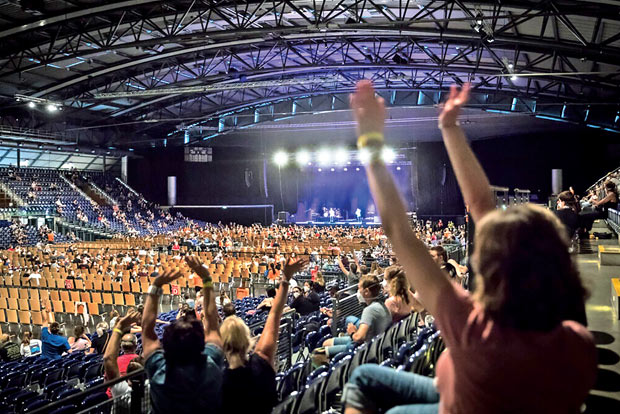Begin typing your search...
CULTURAL REVIVAL ON ANVIL: Concert-goers find a reason to applaud
The test event, one of the first close examinations of how a virus might be transmitted among a crowd at an indoor venue, was closely watched in the global entertainment industry, which has been hampered by lockdown restrictions in most countries since the pandemic broke out early this year.

Chennai
Researchers in Germany may have some good news for frustrated concert-goers across the world whose activities have been constrained by the spread of the coronavirus. Analysis of an indoor concert staged by scientists in August suggests that the impact of such events on the spread of the coronavirus is “low to very low” as long as organizers ensure adequate ventilation, strict hygiene protocols and limited capacity, according to the German researchers who conducted the study.
“There is no argument for not having such a concert,” Dr. Michael Gekle, part of the team at Martin Luther University Halle-Wittenberg who conducted the study, said in an interview. “The risk of getting infected is very low.” The study was posted online and announced at a news conference on Thursday but has not yet been peer reviewed.
The test event, one of the first close examinations of how a virus might be transmitted among a crowd at an indoor venue, was closely watched in the global entertainment industry, which has been hampered by lockdown restrictions in most countries since the pandemic broke out early this year.
Some experts expressed skepticism about the results, saying they needed to be replicated and reviewed, and that more information was needed about how researchers used the modeling.
Dr. Gabriel Scally, president of epidemiology and public health at the Royal Society of Medicine, said the findings were potentially “useful,” but that it might be difficult to replicate the controls that the researchers had implemented at many real-life events.
To gauge contacts during the concert, which was held in Leipzig, volunteers were first tested for the virus and given temperature checks before entering the venue. Each person was given a hand disinfectant laced with a florescent dye and a digital location tracker, and different social distancing scenarios were simulated over 10 hours. They included breaks for attendees to go to the bathroom and to simulate buying food and drink from vendors.
Participants were not distanced in one scenario, partially distanced in a checkerboard formulation in a second, and strictly distanced in a third.
Researchers also used a fog machine to observe the movement of air inside the venue and calculate the likelihood of exposure to aerosol droplets. In one model, jet nozzles on the roof above the arena’s highest rows sent fresh air through to the inner floor of the arena. In another, fresh air was sucked into the arena from the rooftop and the jet nozzles were switched off.
Computer modeling found that 10 times as many people would be exposed to an infectious person’s aerosols in the second scenario compared with the first, suggesting that regular circulation of air decreased the density of any viruses in aerosols, the researchers said. Social distancing further decreased exposure to the aerosols, they said. “We knew that ventilation was important but we didn’t expect it to be that important,” said Dr. Gekle.
The simulation also found that prolonged contact — of at least several minutes — was the highest during breaks in programming, and when audience members entered the venue.
But Paul Linden, a professor of fluid mechanics at University of Cambridge, said that the computer modeling had not taken into account factors such as heat rising from an audience or indoor air turbulence, and that it was difficult to pinpoint whether it was the pattern of air flow or less ventilation in the venue that led to increased exposure to aerosols. As a general rule, he added, venues needed to bring in as much clean air as possible to lower transmission rates. The German team has already made a series of recommendations for safety guidelines at live events including installing new ventilation technology that effectively and regularly exchanges air, seated food and drink breaks, making masks compulsory and directing attendees through multiple entrances.
Isabella Kwai is a reporter in the London bureau. NYT©2020
The New York Times
Visit news.dtnext.in to explore our interactive epaper!
Download the DT Next app for more exciting features!
Click here for iOS
Click here for Android
Next Story



